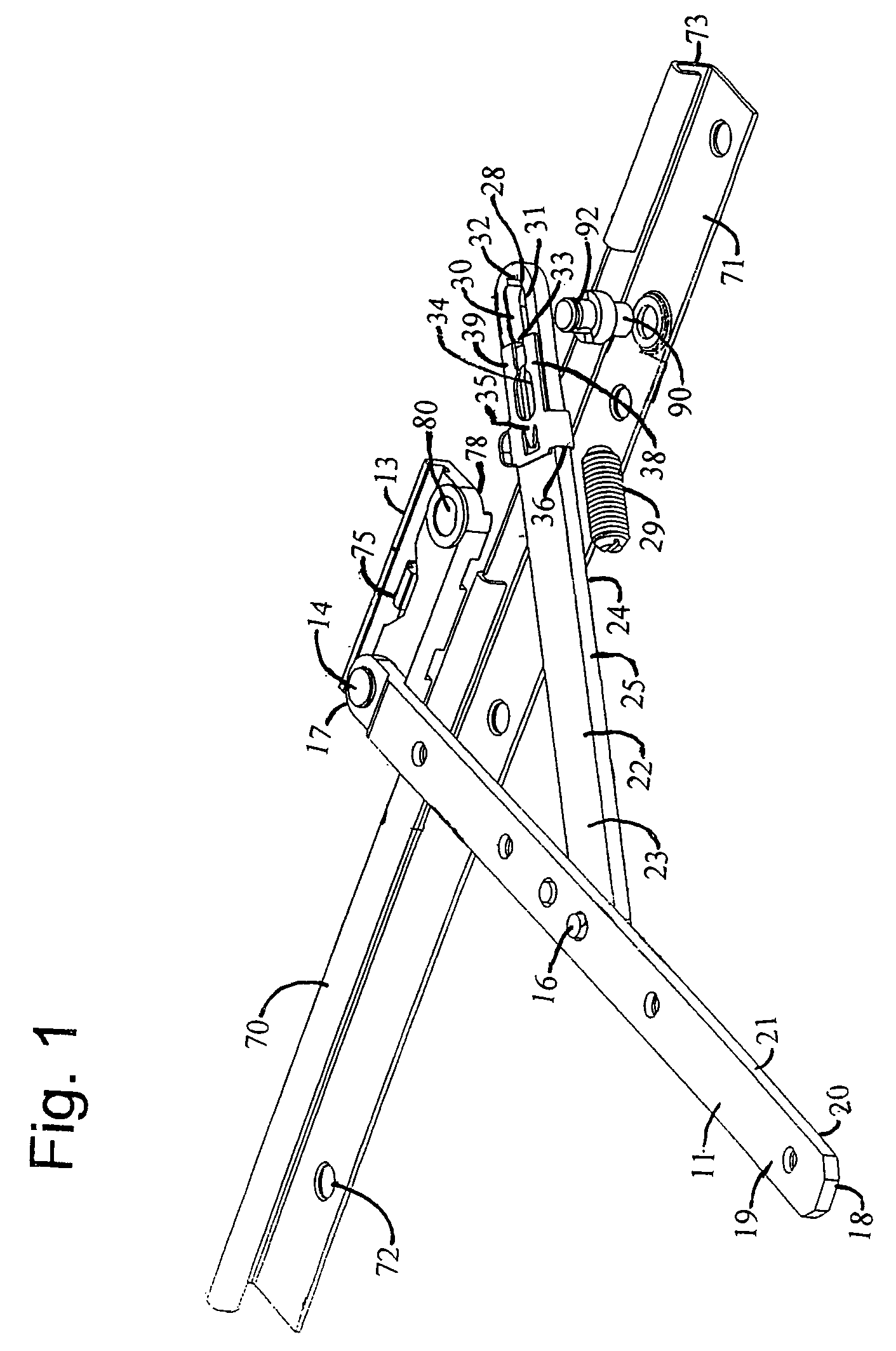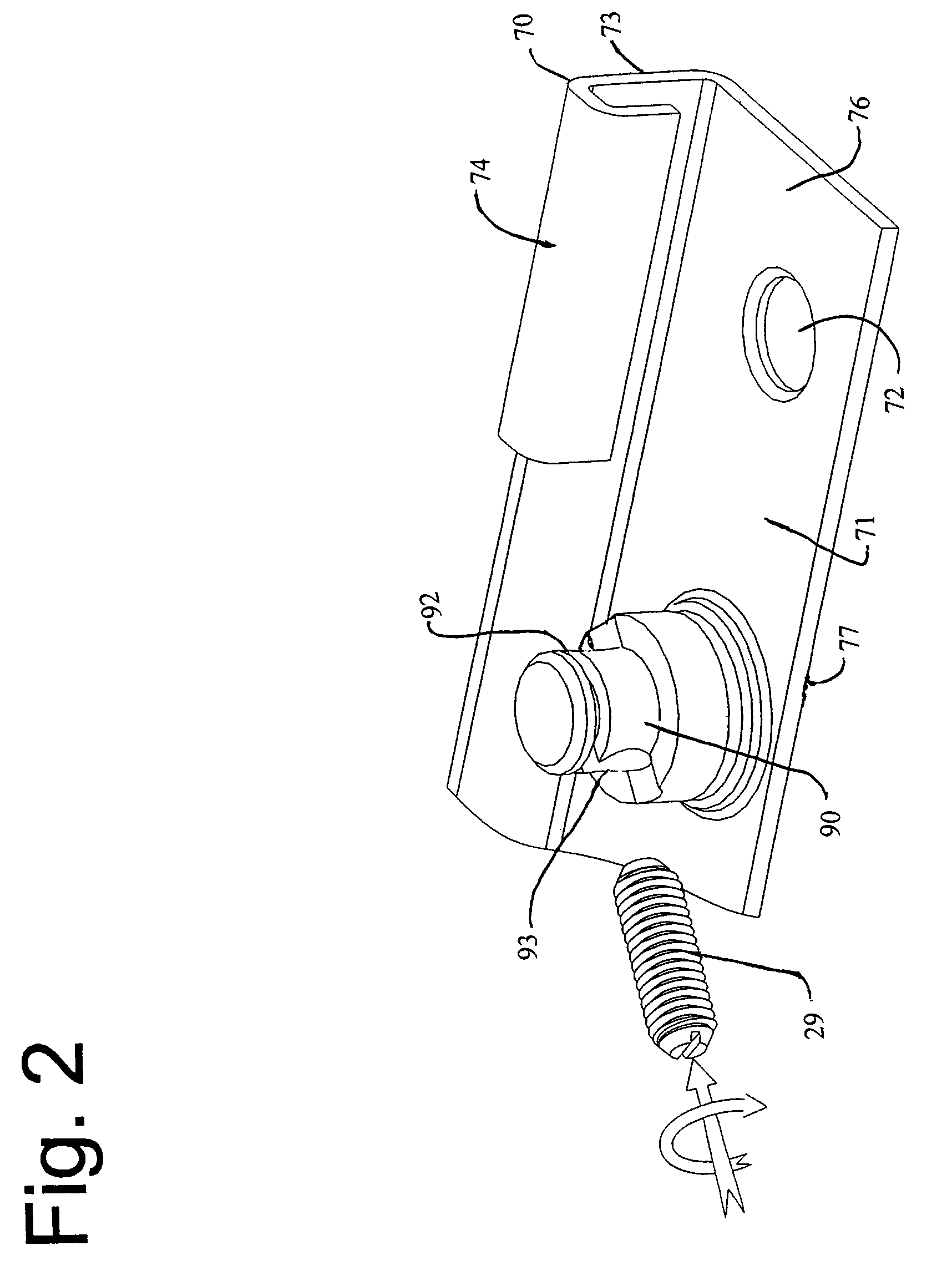Adjustable window hinge
a technology for window frames and hinges, applied in door/window fittings, multi-purpose tools, construction, etc., can solve the problems of no simple, clear solution, sash of casement windows may begin to drag against the window frame, etc., and achieve the effect of minimizing any loosening of the hing
- Summary
- Abstract
- Description
- Claims
- Application Information
AI Technical Summary
Benefits of technology
Problems solved by technology
Method used
Image
Examples
Embodiment Construction
[0021]As required, detailed embodiments of the present invention are disclosed herein; however, it is to be understood that the disclosed embodiments are merely exemplary of the invention, which may be embodied in various forms. Therefore, specific structural and functional details disclosed herein are not to be interpreted as limiting, but merely as a basis for the claims and as a representative basis for teaching one skilled in the art to variously employ the present invention in virtually any appropriately detailed structure.
[0022]Referring now to the drawings, and, more specifically, to FIG. 1, sash arm 11 is used to connect casement window 10, not shown, to window sash 12, not shown. Casement window 10 is used to facilitate the opening and closing of a window sash 12. Sash arm 11 is at one end pivotally attached to shoe block 13 and is mounted along its length to the underside of window sash 12, with a fastener, any type of fastener known in the art, but not limited to a screw,...
PUM
 Login to View More
Login to View More Abstract
Description
Claims
Application Information
 Login to View More
Login to View More - R&D
- Intellectual Property
- Life Sciences
- Materials
- Tech Scout
- Unparalleled Data Quality
- Higher Quality Content
- 60% Fewer Hallucinations
Browse by: Latest US Patents, China's latest patents, Technical Efficacy Thesaurus, Application Domain, Technology Topic, Popular Technical Reports.
© 2025 PatSnap. All rights reserved.Legal|Privacy policy|Modern Slavery Act Transparency Statement|Sitemap|About US| Contact US: help@patsnap.com



